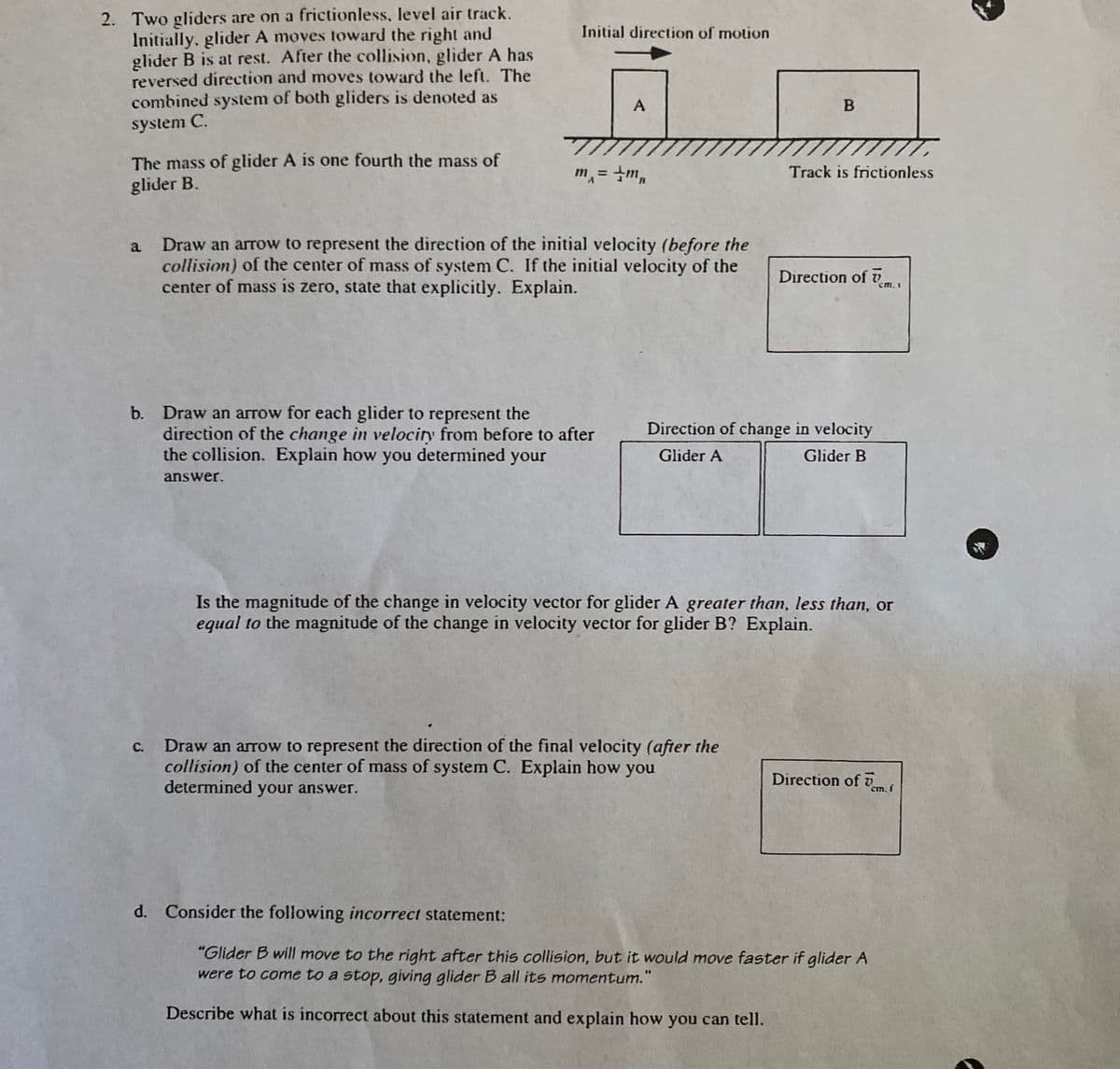Two gliders are on a frictionless, level air track. Initially. glider A moves toward the right and glider B is at rest. After the collision, glider A has reversed direction and moves toward the left. The combined system of both gliders is denoted as
Two gliders are on a frictionless, level air track. Initially. glider A moves toward the right and glider B is at rest. After the collision, glider A has reversed direction and moves toward the left. The combined system of both gliders is denoted as
Related questions
Question
Conservation of momentum

Transcribed Image Text:2. Two gliders are on a frictionless, level air track.
Initially. glider A moves toward the right and
glider B is at rest. After the collision, glider A has
reversed direction and moves toward the left. The
combined system of both gliders is denoted as
Initial direction of motion
A
system C.
The mass of glider A is one fourth the mass of
glider B.
Track is frictionless
%3D
Draw an arrow to represent the direction of the initial velocity (before the
collision) of the center of mass of system C. If the initial velocity of the
center of mass is zero, state that explicitly. Explain.
a
Direction of v
cm. I
b. Draw an arrow for each glider to represent the
direction of the change in velocity from before to after
the collision. Explain how you determined your
Direction of change in velocity
Glider A
Glider B
answer.
Is the magnitude of the change in velocity vector for glider A greater than, less than, or
equal to the magnitude of the change in velocity vector for glider B? Explain.
C.
Draw an arrow to represent the direction of the final velocity (after the
collision) of the center of mass of system C. Explain how you
determined your answer.
Direction of vm.f
d. Consider the following incorrect statement:
"Glider B will move to the right after this collision, but it would move faster if glider A
were to come to a stop, giving glider B all its momentum."
Describe what is incorrect about this statement and explain how you can tell.
B
Expert Solution
This question has been solved!
Explore an expertly crafted, step-by-step solution for a thorough understanding of key concepts.
This is a popular solution!
Trending now
This is a popular solution!
Step by step
Solved in 3 steps with 3 images
